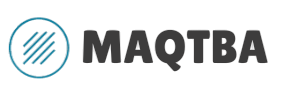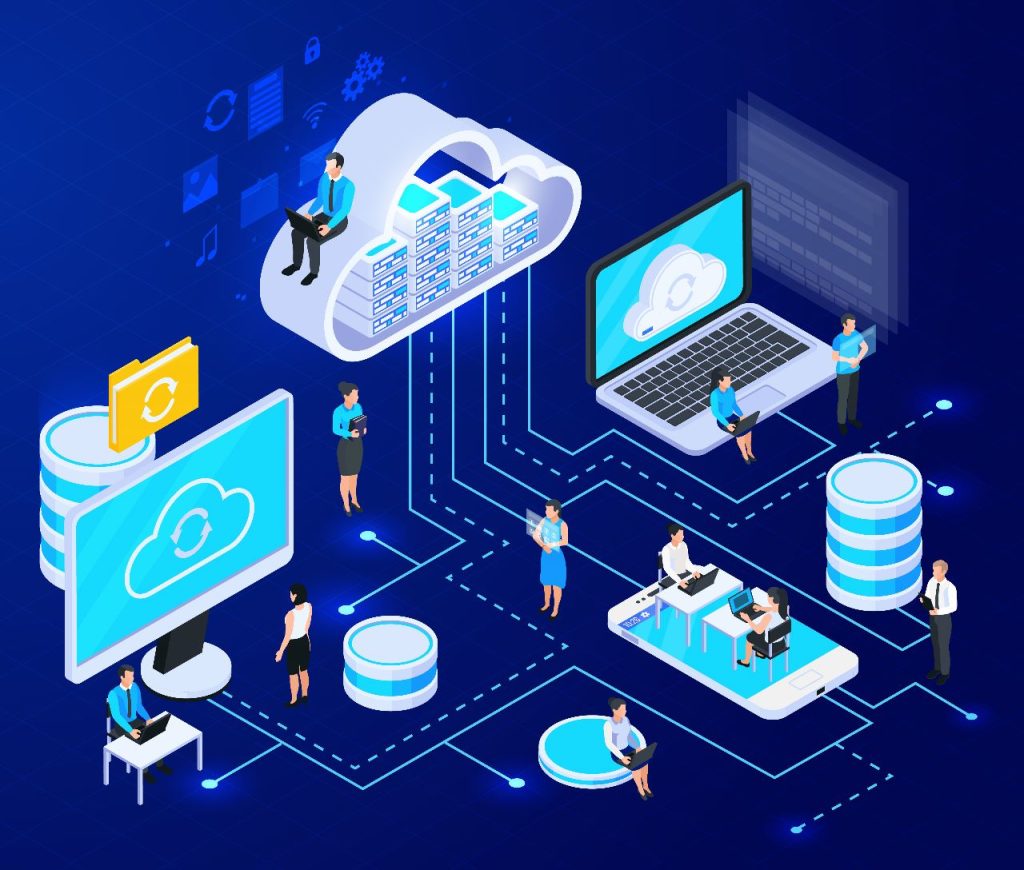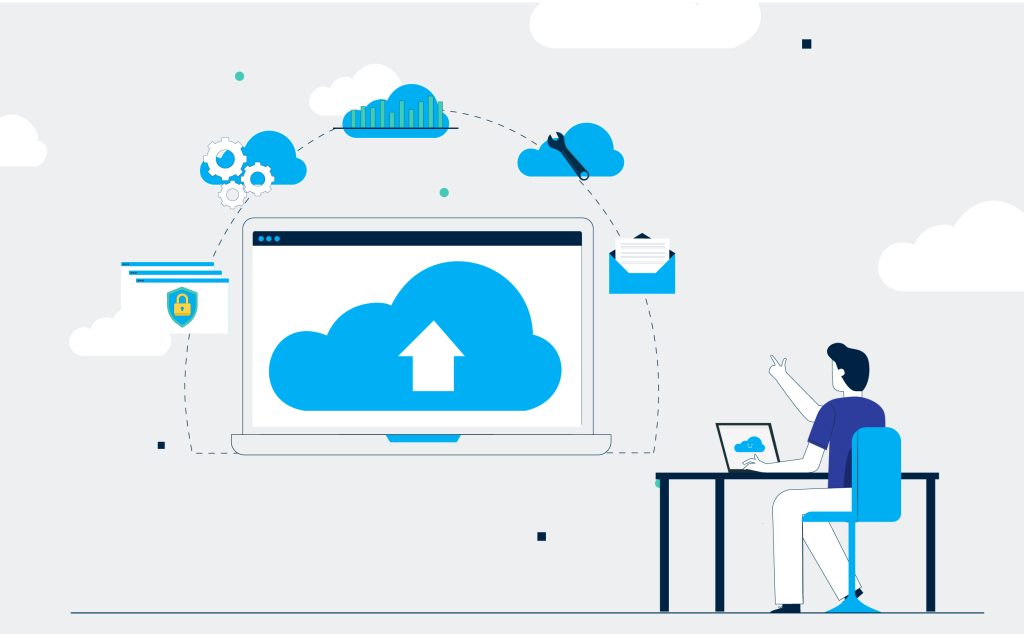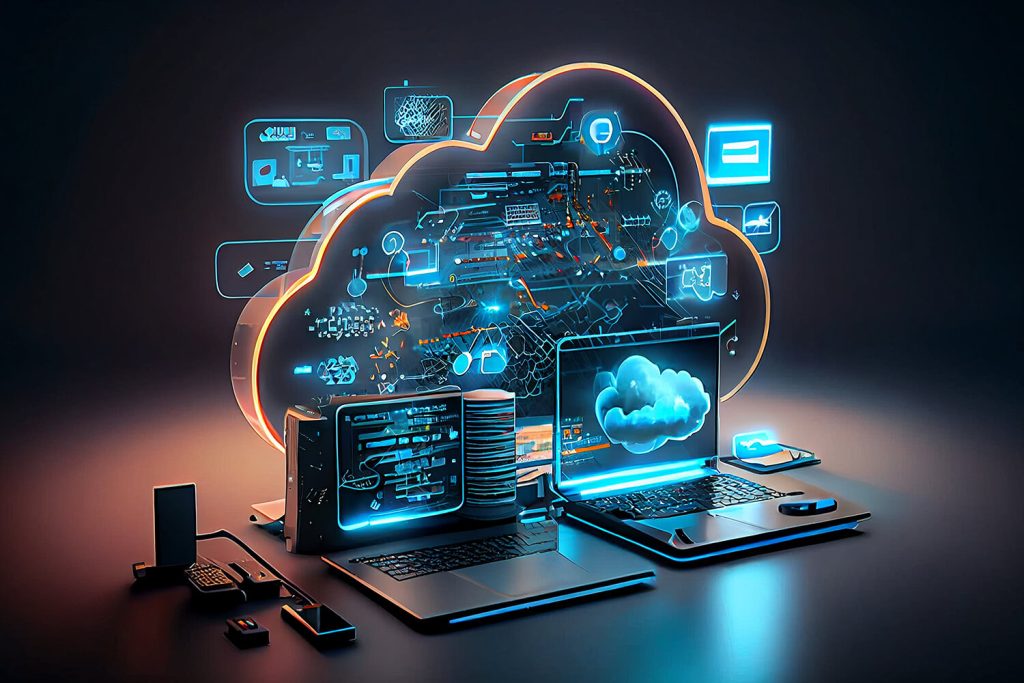Table of Contents:
- What is Cloud Computing?
- Why Is It So Important in 2025?
- Real-World Examples of Cloud Computing
- Types of Cloud Services (IaaS, PaaS, SaaS)
- The Main Cloud Providers: AWS, Azure, GCP
- Who Can Learn Cloud? (Spoiler: Anyone)
- Certifications That Matter
- Beginner Learning Roadmap
- Remote Job Opportunities After Learning Cloud
- Final Thoughts + Free Resources
1. 🌩️ What Is Cloud Computing?
At its core, cloud computing is renting computing power and storage instead of buying it. Instead of buying your own servers, you use someone else’s — like Amazon, Microsoft, or Google.
This allows you to:
- Store data
- Run applications
- Host websites
- Process machine learning models
…without ever owning a physical data center.
In simple terms: cloud computing = renting someone else’s supercomputer.
2. 🌍 Why Is It So Important in 2025?
The digital economy is growing faster than ever. From AI tools and e-commerce stores to fintech apps and global supply chains — everything runs on the cloud.
By 2025:
- Over 90% of companies use cloud services in some form.
- Cloud job postings have tripled in the past 4 years.
- Remote work is driving demand for globally distributed cloud-savvy teams.
Whether you’re a developer, data analyst, or content creator, you’re using cloud tech — even if you don’t know it.
3. 💼 Real-World Examples of Cloud Computing
Let’s break it down with real examples:
| Company | Use of Cloud |
|---|---|
| Netflix | Streams movies using AWS servers |
| Spotify | Stores and recommends songs via GCP |
| Zoom | Runs video meetings on cloud infra |
| Airbnb | Hosts listings & booking systems via AWS |
| Uber | Real-time tracking & analytics via Google Cloud |
These companies don’t own massive server farms — they rent them.
4. 🧱 The 3 Main Types of Cloud Services
Cloud services are usually categorized into 3 models:
✅ IaaS (Infrastructure as a Service)
You rent virtual servers, storage, and networks.
- Example: AWS EC2 (virtual machines), GCP Compute Engine
✅ PaaS (Platform as a Service)
You build apps without worrying about servers.
- Example: Google App Engine, Azure App Services
✅ SaaS (Software as a Service)
You use complete software hosted in the cloud.
- Example: Google Docs, Zoom, Notion, Canva
5. 🏢 Meet the Cloud Giants
The “Big 3” cloud providers dominate the global market:
| Provider | Key Services | Market Share (2025 est.) |
|---|---|---|
| AWS | EC2, S3, Lambda, RDS | 31% |
| Azure | Virtual Machines, App Services | 24% |
| GCP | Compute Engine, BigQuery | 11% |
Each provider has strengths:
- AWS: Largest ecosystem, best for enterprises
- Azure: Strong integration with Microsoft tools
- GCP: Developer-friendly, excellent for data & AI
You only need to start with one. Most people begin with GCP or AWS.
6. 🧠 Who Can Learn Cloud? (Yes, You.)
Forget the stereotype. You don’t need to be a genius coder.
You can learn cloud computing if you:
- Are switching careers
- Want a remote job
- Know a little IT and want to upskill
- Are just curious and ready to start from scratch
With the right roadmap and support, you can build real projects and land a job — even without a university degree.
7. 📜 The Certifications That Open Doors
These certifications help you stand out:
| Certification | For Beginners? | Provider |
|---|---|---|
| AWS Certified Cloud Practitioner | ✅ Yes | AWS |
| Google Associate Cloud Engineer | ✅ Yes | GCP |
| Azure Fundamentals (AZ-900) | ✅ Yes | Azure |
| AWS Solutions Architect Associate | ❌ Mid-Level | AWS |
| Google Professional Cloud Architect | ❌ Mid-Level | GCP |
These are globally recognized and don’t require coding for the beginner-level ones.
8. 🛣️ Beginner Learning Roadmap
Here’s a simplified plan to follow:
🚀 Month 1:
✅ Learn what cloud is
✅ Pick one provider (e.g., GCP)
✅ Understand regions, VMs, storage, networking
✅ Create a free account
🚀 Month 2:
✅ Take a beginner certification course
✅ Build small projects (deploy a website, create a VM)
✅ Learn IAM (permissions and security)
🚀 Month 3:
✅ Prepare for certification exam
✅ Build portfolio projects
✅ Start applying for jobs or internships
🎓 Tip: Maqtba offers step-by-step cloud training with real labs to help you practice everything you learn.
9. 💻 Remote Job Opportunities After Learning Cloud
Cloud skills open doors to:
- Cloud Support Associate
- DevOps Assistant
- Data Engineer Intern
- Junior Site Reliability Engineer
- Remote IT Operations Assistant
- Cloud QA Tester
- Technical Support (Cloud SaaS)
Salaries start between $35,000–$70,000+ annually depending on location and role.
If you combine cloud with basic scripting (Bash, Python), or tools like Terraform, you can double your value.
10. 🧭 Final Thoughts: Don’t Wait to Be Ready
You don’t need to feel 100% prepared to begin.
You just need momentum.
Cloud computing is growing fast, and it rewards action. Whether you want a better job, more freedom, or to understand how the internet really works — learning cloud can be your turning point.





